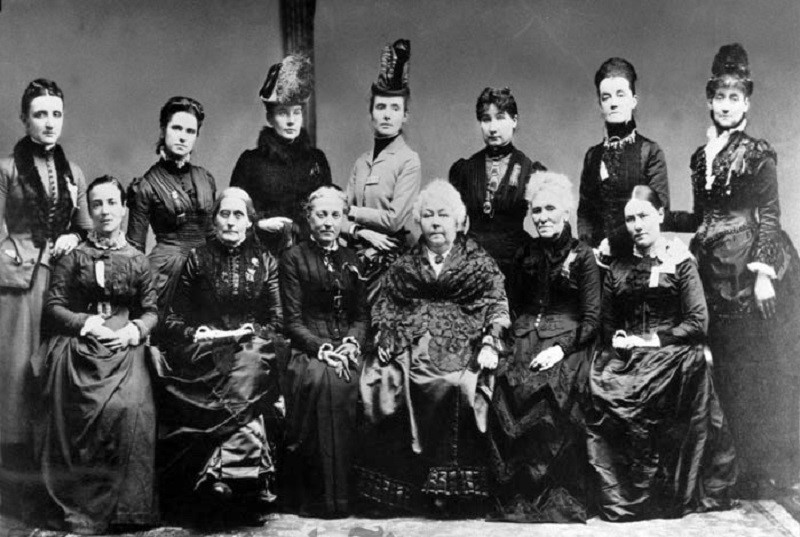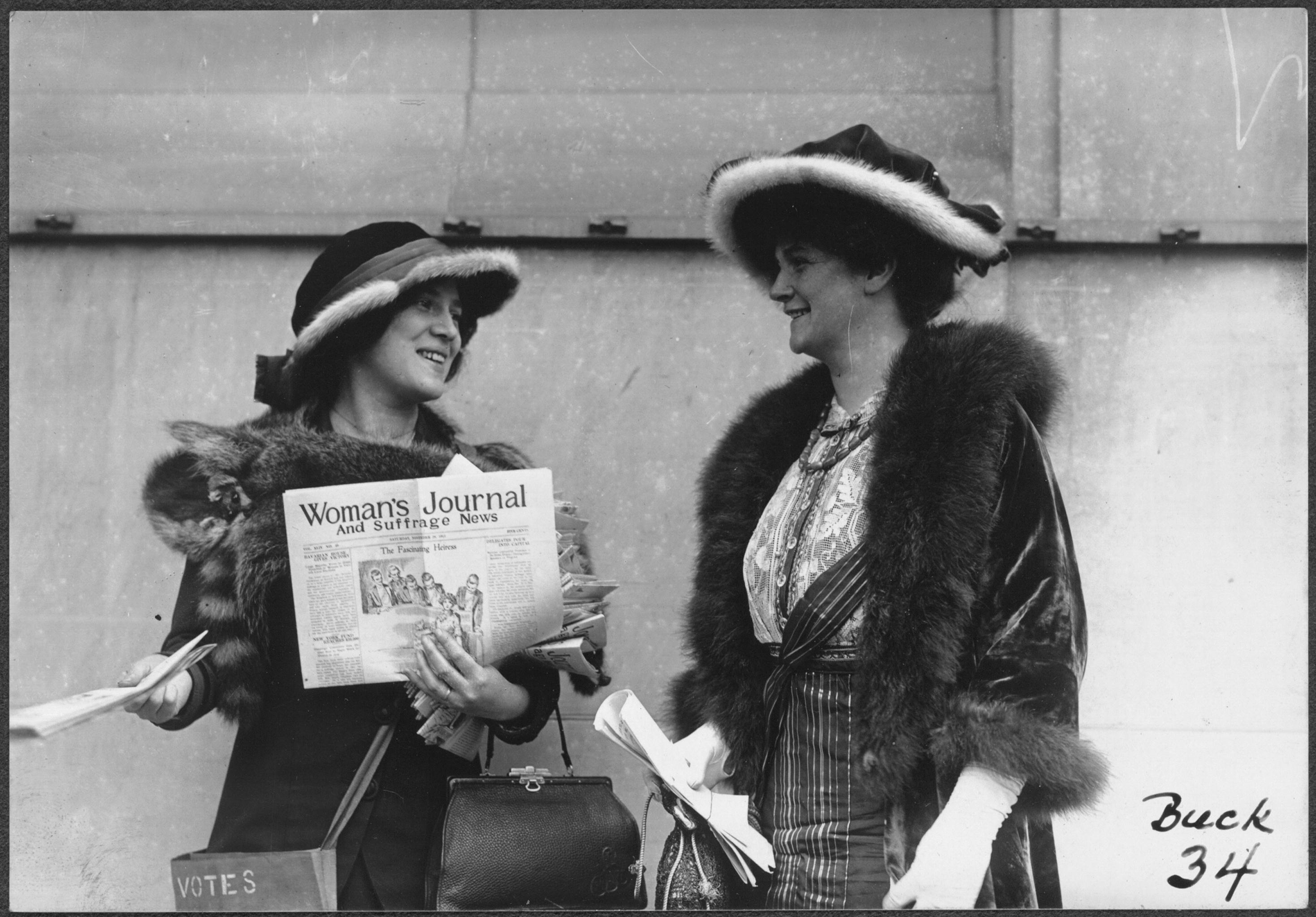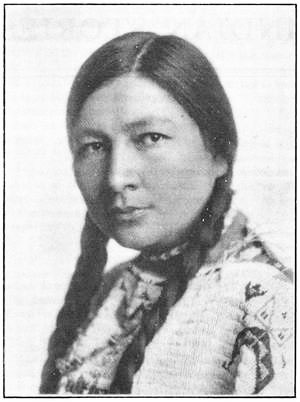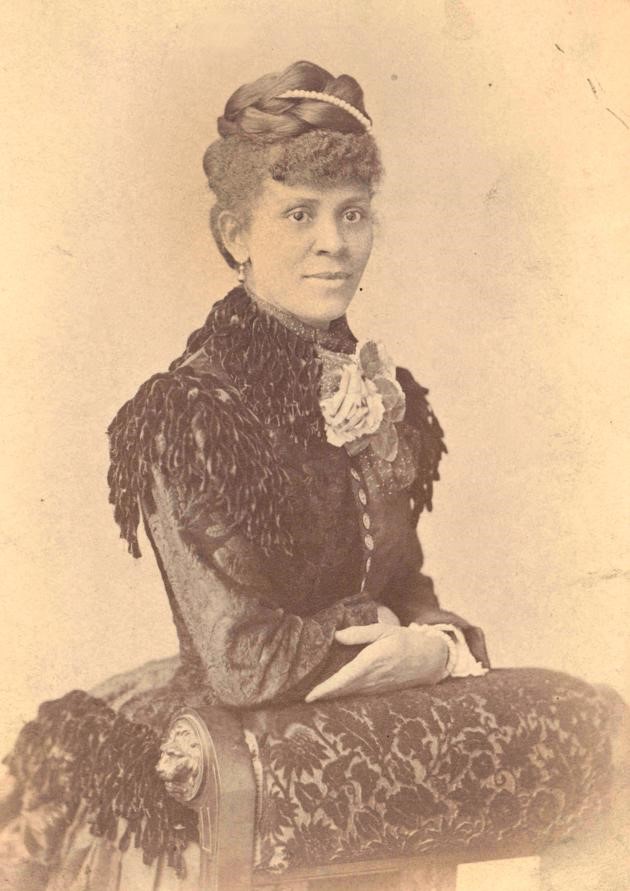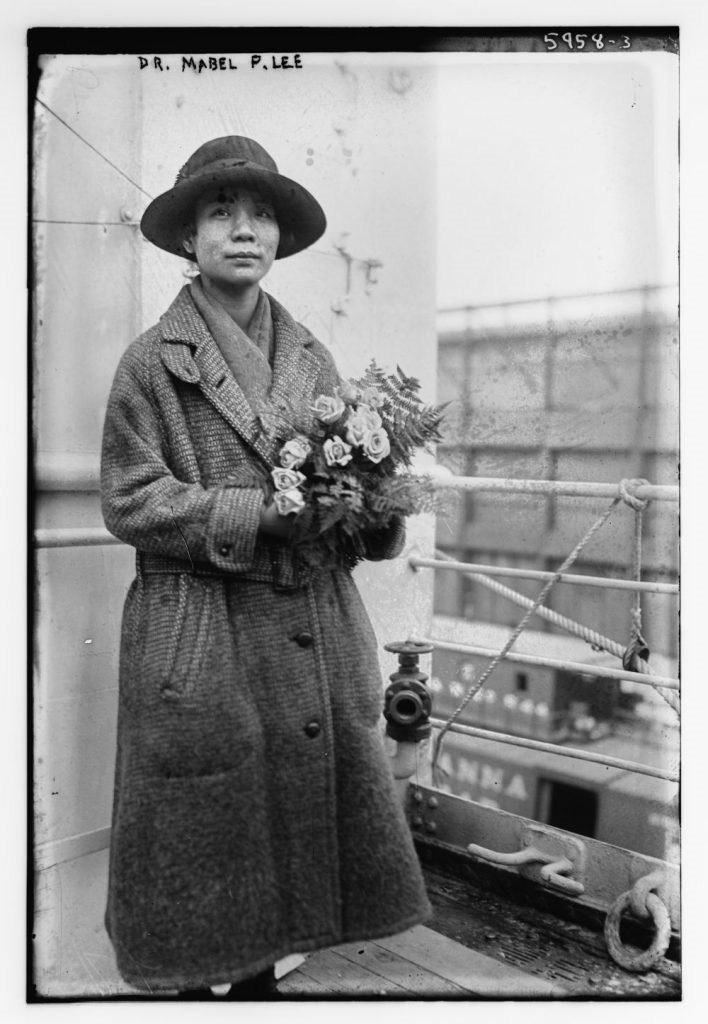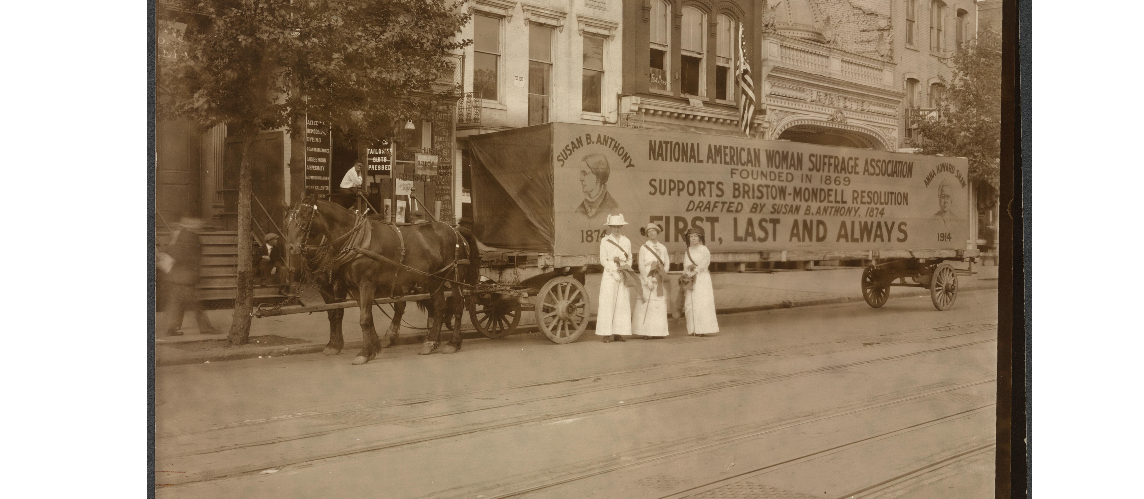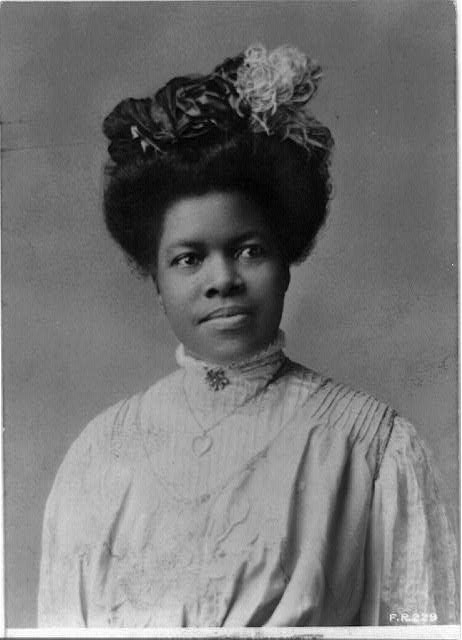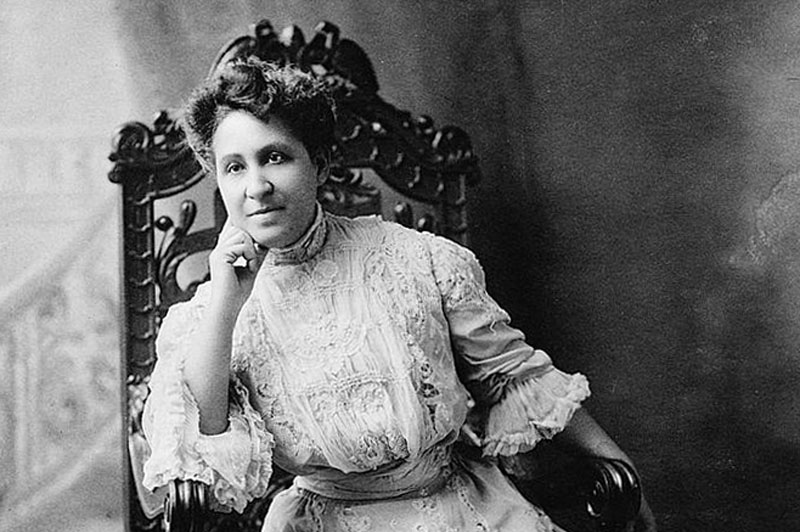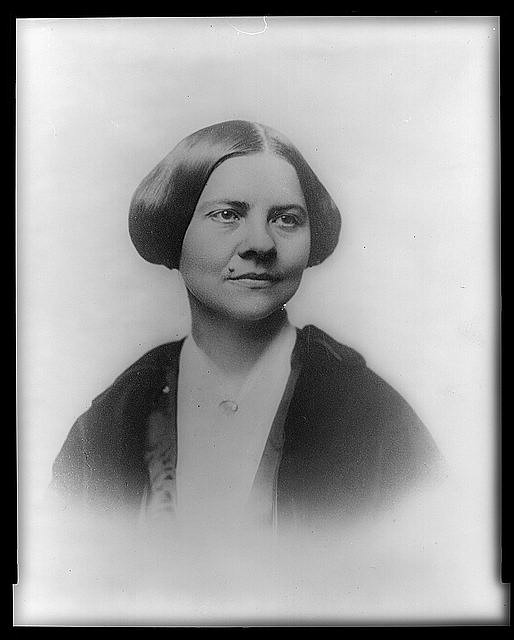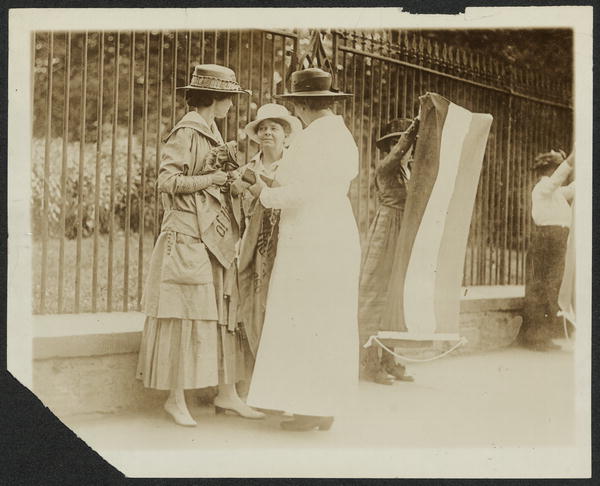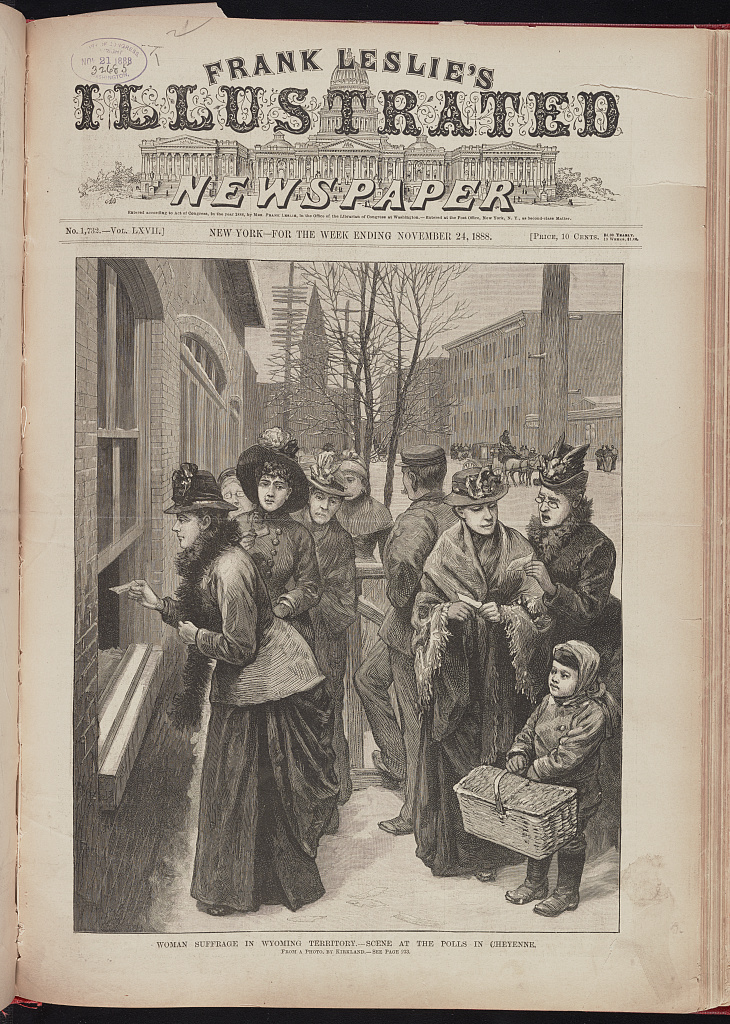Celebrating the 19th Amendment
Celebrate the 100th anniversary of the 19th Amendment with stories about the people and events that led to the passage of women’s suffrage in the United States.
The executive committee of the National Woman’s Suffrage Association. Image courtesy of Encyclopedia Brittanica.
Over the course of the last year, the Center for Local History has collected the stories of the individuals and groups that helped lay the foundation for women’s suffrage in the United States.
As the Library commemorates the 100th anniversary of the 19th Amendment, a major milestone in enacting the democratic principles of our nation, read the stories detailing the people and events that led up to this historic moment.
Suffragist Margaret Foley distributing the Woman’s Journal and Suffrage News, 1913. Library of Congress Prints and Photographs Division.
The Woman’s Journal was a women’s rights publication that produced its first issue on January 8, 1870. One of the most significant and popular publications of the women’s suffrage movement, it ran in various forms from 1870 to 1931. Founded by suffragist Lucy Stone and her husband Henry Browne Blackwell in Boston, Massachusetts, the Woman's Journal aimed to provide a broad segment of women with information on the women’s rights movement and the suffrage cause.
Image of Zitkála-Šá ca. 1921, courtesy of the Library of Congress
Nationally recognized as an author and activist, Zitkála-Šá was a vocal proponent for citizenship and voting rights for Native Americans. A Lyon Park resident later in life, she passed away on this date in 1938 and is buried in Arlington Cemetery.
Hallie Quinn Brown. Image courtesy of Wilberforce-Payne Unified Library.
Born on March 10, 1865, Hallie Quinn Brown was a preeminent educator, writer, public speaker, and activist in the causes of civil rights and suffrage throughout the 19th and 20th centuries. She was a president of the National Council of Colored Women and worked on political campaigns throughout her life.
Dr. Mabel Lee, date unknown. Photo from the George Grantham Bain Collection, courtesy of the Library of Congress.
On May 4, 1912, Mabel Ping-Hua Lee made history when she led one of New York City’s major suffrage parades on horseback. Lee was an active suffragist and activist throughout her life despite the barriers around her – for example, Chinese women such as Lee herself would not be able to vote until the Chinese Exclusion Act was removed in 1943 and they could become citizens.
“Horse-drawn float declares National American Woman Suffrage Association’s support for Bristow-Mondell amendment.” Circa 1914. Image courtesy of the Library of Congress.
In 1866, the women’s suffrage movement experienced a significant change in its organization as the various groups leading the struggle toward women’s suffrage split over certain issues. Key among them was support for the 15th Amendment, (passed in 1869), which states that "The right of citizens of the United States to vote shall not be denied or abridged by the United States or by any State on account of race, color, or previous condition of servitude."
Nannie Helen Burroughs photographed between 1900 and 1920. Image courtesy of the Library of Congress.
Nannie Helen Burroughs, who was a leading educator, feminist and suffragist in the Washington, D.C., area throughout the early 20th century, founded a school for girls and women and was an active member in her community.
Portrait of Ida B. Wells, circa 1893. Image courtesy of the National Park Service.
Ida B. Wells was an investigative journalist, activist, and suffragist who led an anti-lynching crusade in the United States in the 1890s. She was also one of the founders of the National Association for the Advancement of Colored People (NAACP).
Mary Church Terrell, photo taken between 1880 and 1900, printed later. Library of Congress Prints and Photographs Division.
Born on September 23, 1863, Mary Church Terrell was a D.C. suffragist who was a tireless champion of women’s rights and racial justice. She was the first president of the National Association of Colored Women, an active member of the National American Woman Suffrage Association, and was engaged in lawsuits related to civil rights well into her eighties.
Video of Agatha Tiegel Hanson, reminiscing [about her college experiences] with unnamed younger people. From the Gallaudet Archives. No transcript, undated.
Agatha Tiegel Hanson was the first female graduate (and valedictorian) of Gallaudet University and an early champion of both deaf and women’s rights. Hanson, who passed away on October 17, 1959, was instrumental in organizing women’s groups on Gallaudet’s campus and continued to advocate for equality throughout her life.
Lucy Stone, one of the Convention’s lead organizers and a speaker at the event.
On October 23, 1850, the first National Woman’s Rights Convention began in Worcester, Massachusetts. Amidst the ringing fervor of the mid-19th-century clarion call for expanding women’s rights – with the right to vote as its central tenet – this day would emerge as a significant step in solidifying the goals and action plan of the women’s suffrage movement in the United States.
Policewoman arrests Florence Youmans of Minnesota and Annie Arniel (center) of Delaware for refusing to give up their banners. June 1917. Library of Congress Prints and Photographs Division.
On November 14, 1917, a group of suffragists underwent a horrifying night of torture and abuse that would come to be known as the “Night of Terror.” On this day in history, 33 women protesters were taken to the Occoquan Workhouse in Fairfax County and subjected to brutal treatment by the prison’s guards in retaliation for the women’s ongoing peaceful protest for the right to vote.
Portrait of Sojourner Truth. Caption on portrait reads: "I sell the shadow to support the substance." Library of Congress Prints and Photographs Division.
November 26 marks the anniversary of the death of legendary suffragist and abolitionist Sojourner Truth. Born into slavery as Isabella Baumfree (sometimes written as Bomfree) in 1797, Truth was enslaved in Dutch-speaking Ulster County, New York, where she was bought and sold four times throughout her life.
“Scene at the Polls in Cheyenne,” 1888.
Library of Congress Prints and Photographs Division.
On December 10, 1869, the frontier territory became the first to explicitly grant women the right to vote when Governor John Campbell approved “An Act to Grant to the Women of Wyoming Territory the Right of Suffrage and to Hold Office.”
To learn more about Arlington's history, visit the Center for Local History on the first floor of the Central Library.
Do you have a question about this story or a personal experience to share?
Use this form to send a message to the Center for Local History.
Center For Local History - Blog Post Message Form
Do you have a question about this story, or a personal experience to share? Use this form to send a message to the Center for Local History.
"*" indicates required fields
